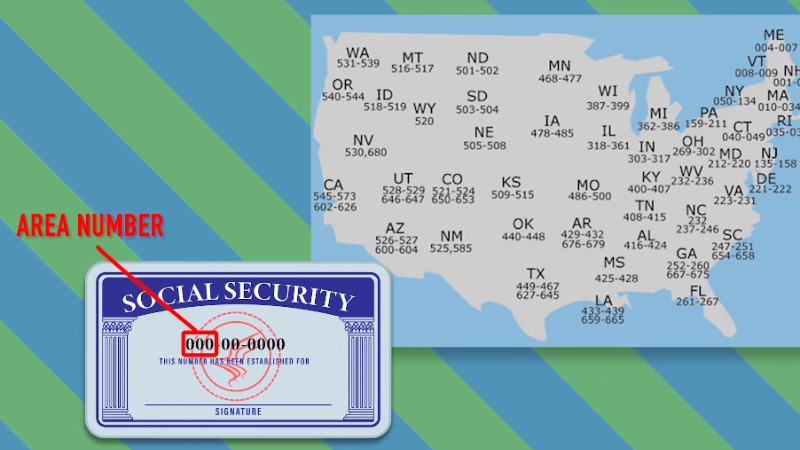Introduction
Social Security Numbers (SSNs) are unique identifiers assigned to individuals by the United States government. They are widely used in various systems and applications, including healthcare, finance, and government agencies. When designing a system or database that requires SSN fields, it is crucial to choose the right data type to ensure accuracy and security. In this guide, we will explore the different data types available for SSN fields and provide recommendations on how to choose the right one for your specific needs.
What Data Type Should Joe Use For The Social Security Number Field And Why?
The recommended data type for storing social security numbers is a string or character data type, such as VARCHAR or CHAR. This is because SSNs contain both numbers and dashes and are not used in mathematical calculations. Using a string data type allows for the inclusion of dashes and ensures that the SSN is stored as a single unit, rather than being separated into individual digits. Additionally, it is important to ensure that the SSN field is properly encrypted and secured to protect sensitive personal information.
Understanding Data Types
Data types are an important aspect of database design and management. They determine the type of data that can be stored in a particular field, and how that data can be manipulated. In addition to string data types like VARCHAR and CHAR, there are also numerical data types, such as INT and FLOAT, and boolean data types, such as BOOLEAN or BIT. Choosing the appropriate data type for each field in a database is crucial for ensuring data accuracy and efficiency. It is also important to consider data type compatibility when designing queries and performing data analysis.
Which Data Type Would Be Used To Store Social Security Numbers?

The data type that would be used to store Social Security Numbers (SSNs) in a database is typically a string data type, such as VARCHAR or CHAR. This is because SSNs are typically represented as a series of nine digits with dashes in between, which is a format that can be easily stored and manipulated as a string. It is important to ensure that the field length is set appropriately to accommodate the full length of the SSN, including the dashes.
Factors To Consider When Choosing Data Types
When choosing data types for a database, there are several factors to consider. These include the type of data being stored, the size of the data, the expected range of values, and the operations that will be performed on the data. For example, if the data being stored is numeric, the appropriate data type would be an integer, float, or decimal, depending on the size and precision of the numbers. If the data is text-based, a string data type such as VARCHAR or TEXT would be appropriate.
It is also important to consider the expected range of values for the data. For example, if a field is expected to contain only positive integers up to a certain value, an unsigned integer data type would be appropriate.
Finally, it is important to consider the operations that will be performed on the data. For example, if a field will be used in calculations or comparisons, a numeric data type would be more appropriate than a string data type.
Choosing The Best Data Type
It is important to carefully consider the appropriate data type for each field in a database. This can help ensure data accuracy, efficiency, and compatibility with other systems. Factors to consider when choosing a data type include the size and range of expected values, the operations that will be performed on the data, and any compatibility requirements with other systems. By selecting the best data type for each field, you can help ensure that your database operates smoothly and accurately.
Common Mistakes When Choosing Data Types
When choosing data types for a database, there are several common mistakes that people make. One mistake is choosing a data type that is too large for the expected values, which can waste storage space and slow down operations. Another mistake is choosing a data type that is too small for the expected values, which can lead to data truncation or loss. Additionally, some people may choose data types based on personal preference rather than practical considerations, which can lead to compatibility issues with other systems. It’s important to carefully consider the specific needs of your database and select appropriate data types to avoid these common mistakes.
Best Practices For Data Handling And Management
When it comes to data handling and management, several best practices can help ensure the accuracy, integrity, and security of your data.
Firstly, it’s important to establish clear data entry and management protocols, including standardizing data formats, defining data validation rules, and enforcing data quality standards. This can help ensure that data is consistently entered and managed in a way that is accurate and reliable.
Secondly, it’s important to regularly back up your data to prevent data loss in the event of a system failure or other disaster. This can involve creating regular backups of your data and storing them in secure, offsite locations.
Thirdly, it’s important to implement appropriate security measures to protect your data from unauthorized access or theft. This can involve using strong passwords, encrypting sensitive data, and implementing access controls to restrict access to sensitive data.
Finally, it’s important to regularly review and audit your data management practices to ensure that they are effective and up-to-date. This can involve conducting regular data quality checks, reviewing data access logs, and implementing new data management practices as needed.
Conclusion
When choosing the right data type for social security number fields, it is important to consider the level of security and protection required for this sensitive information. It is recommended to use a data type that can store the full social security number without any formatting or masking, such as a string or text data type. Additionally, it is important to implement strong security measures to protect this data, such as encryption, access controls, and multi-factor authentication. Regularly reviewing and auditing data management practices can also help ensure that security measures are effective and up-to-date.
Frequently Asked Questions (FAQs)
What Data Type Should Be Used For The Social Security Number Field And Why?

It is recommended to use a data type that can store numeric values and has a fixed length, such as “integer” or “numeric(9)”. This helps to ensure consistency and accuracy of the data and also allows for easier sorting and searching. Additionally, it is important to consider any legal or regulatory requirements for handling social security numbers, as they may dictate specific data types or storage requirements.
What Are The Tips Used For Handling And Protecting Sensitive Data?
Here are some tips for handling and protecting sensitive data:
1. Limit access: Only provide access to sensitive data to those who need it to perform their job duties.
2. Encrypt data: Use encryption to protect sensitive data when it is stored or transmitted.
3. Use strong passwords: Require strong passwords to access sensitive data.
4. Use multi-factor authentication: Use multi-factor authentication to provide an extra layer of security.
5. Keep software up-to-date: Ensure that all software is up-to-date with the latest security patches.
6. Train employees: Train employees on how to handle and protect sensitive data.
7. Regularly review and audit: Regularly review and audit your data management practices to ensure that they are effective and up-to-date.
What Are The Key Points Used In Data Type For Social Security Numbers?

1. Protecting sensitive data is crucial for any organization.
2. Use strong passwords and encryption to secure data.
3. Limit access to sensitive data to only those who need it.
4. Use multi-factor authentication for extra security.
5. Keep software up-to-date with the latest security patches.
6. Train employees on how to handle and protect sensitive data.
7. Regularly review and audit data management practices to ensure effectiveness and up-to-date security measures.
